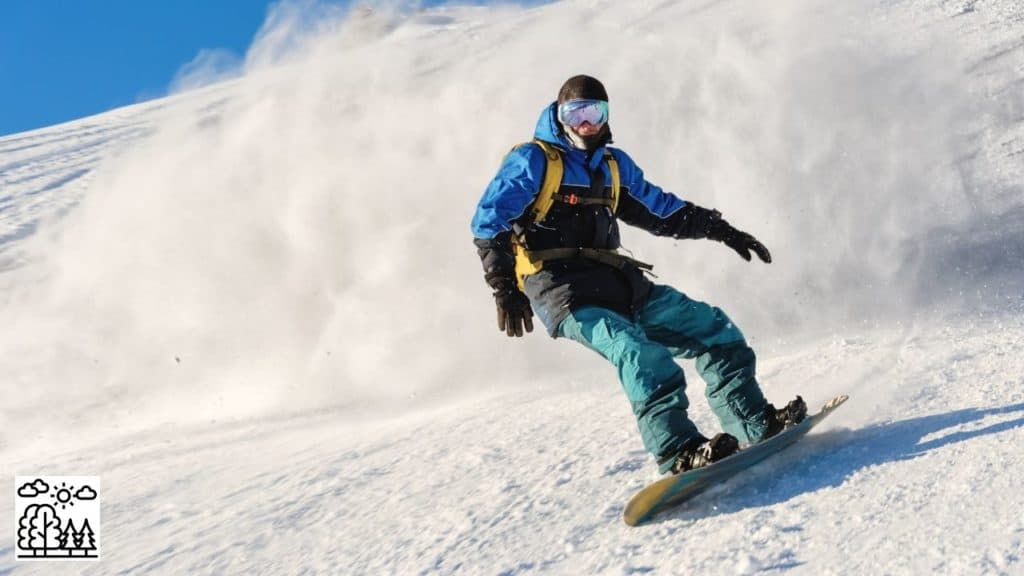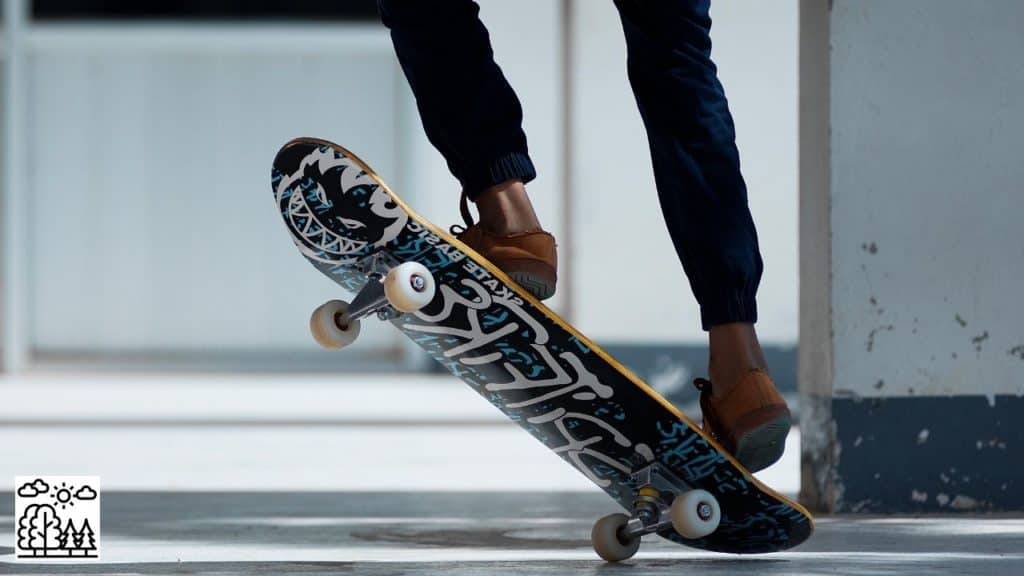If you’re trying to maintain the snowboarding progress you’ve made during the snowy season, then you’re probably wondering how to practice snowboarding in the summer?
Many snowboarders practice other boarding sports in the summer, such as skateboarding, surfing, and longboarding. Such sports help maintain muscle memory and strength. These sports are different from snowboarding, but you can still practice snowboarding tricks while performing other board sports.
Read on to learn about the board games you can delve into during the summer. We’ll also go over how you can create a training program that will make you ready for the next season.
Summertime Training Program
While practicing other board sports can help you sharpen your boarding skills and learn more tricks and movements, creating a summer training program that goes along with your board practice is just as important.
This may seem like a no-brainer, but we can’t stress it enough. Having a steady and effective workout routine during the summer is necessary for starting your next snow season strong.
If you’re like many snowboarders who don’t live near the mountains, then you probably have to spend more time and money to get to your snowboarding spot.
You surely wouldn’t want to waste much of that precious time and money just because you get too exhausted reaching the snowboarding spot.
1. Plan Your Training Ahead
Getting your body in shape for the snow season will take time. And for you to notice the results, it’s advised that you start your training at least six weeks ahead of the season.
This, of course, is the best-case scenario, but if you’ve been slacking and don’t have that much time left before you hit the slopes, then work with whatever time you have.
The whole purpose of this training is to increase muscle strength and boost your stamina.
This, among other things, will help you avoid injuries and sore muscles and give you a better overall snowboarding experience. That’s why any training will be better than no training at all.
2. Setting Up A Training Routine
If you have a personal fitness trainer, you should consult them to come up with a realistic training plan that suits your timeframe and your body’s needs.
If you don’t, no worries. Here’s an overview of what you should aim for when putting together your training program so you can enhance your snowboarding skill set.
A. Building Stamina
There are many ways with which you can achieve higher stamina. Whatever way you choose, you have to know that stamina, also referred to as endurance, is the number-one aspect of an improved snowboarding experience.
Increasing your physical and mental stamina will give you the ability to sustain your efforts and activities for longer periods of time.
This means that you can have longer snowboarding sessions without losing all your energy or facing the mental or physical need to take a break.
With that in mind, your training plan should focus on building both cardiovascular and muscular endurance to achieve improved overall stamina.
More cardiovascular endurance means increasing your heart and lungs’ capabilities to provide your body with the necessary oxygen.
Whereas more muscular endurance means your muscles can endure physical activities for longer periods of time before getting exhausted.
Recommended: How Does Parasailing Work?
B. Balance
Riding down the slopes with uneven snowy grounds isn’t just about having strong muscles. Yes, strong leg muscles are a must, but you’re in for a rough ride without good balance.
The improved balance will help you get better control over your body’s weight while riding. This, of course, leads to a lower risk of injuries and a better chance of performing cool tricks.
Many balance exercises can help you achieve better balance, like using a balance board or even practicing standing on one foot.
C. Mobility
Incorporating mobility exercises into your training will increase your muscles and joints’ range of motion, which lowers the risk of injury and/or pain.
D. Rest
While you might be inclined to train as much as possible, you shouldn’t overlook rest time. Make sure you have time for rest as part of your training schedule.
Giving your body enough recovery time will guarantee better results in the long run and less risk of injuries and/or burnout.
Exploring Other Board Sports
Unless you have enough cash to chase the snowy mountains around the world, summer isn’t the season for snowboarding adventures. It’s the season for many other board sports, though!
Exploring other board sports that are easily accessible during the summertime will have a great impact on sharpening your snowboarding skills.
That said, here are some of the board sports that will help you achieve just that, with a package that includes lots of fun.
1. Skateboarding
If you’ve ever tried skateboarding, you know that it’s quite different from snowboarding. In fact, it can be a bit harder.
This is why professional snowboarders claim that mastering the fundamentals of skateboarding will help you up your game when you’re back to the snow season.
These two sports have different feet positioning, board sizes, and riding techniques. However, you’ll find that some of the tricks are common between the two.
So if you can do a trick on one board, it’ll be easier for you to master it on the other.
2. Surfing
Because who doesn’t love surfing in the summer? Although many factors go into learning how to tackle the waves and surf, your snowboarding skills will come in handy.
Surfing and snowboarding share some of the basic board riding skills since both require similar balance and weight distribution techniques to control your board.
Yes, surfing is a bit harder, and you’ll need some time and practice, but it’s a new adventure with every wave you hit.
And if you’re looking to get more fit, this is a perfect full cardio workout that will help you burn a whole lot of calories.
3. Longboarding
A longboard is basically a large skateboard that’s easier to maneuver, more comfortable to ride, and more suitable for longer rides. You can even use it for transportation.
If you have some experience in snowboarding, you’ll have no problem picking up the required longboarding skills as both are similar.
Longboarding is relatively easy and highly accessible in the summer, and all you need to do is get a longboard, and you’re ready to hit the roads.
4. Wakeboarding
This one might not be as accessible as riding boards in the park or the streets, but a refreshing water adventure in the hot weather is always worth it.
Wakeboarding, unlike snowboarding, doesn’t require as much muscle strength to control your board or adjust your position while riding the water.
So if you’re lucky enough to have a wakeboarding center near you, then you should definitely give it a go.


